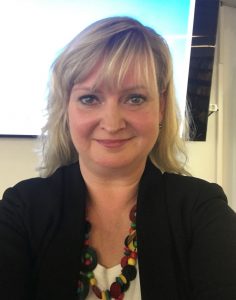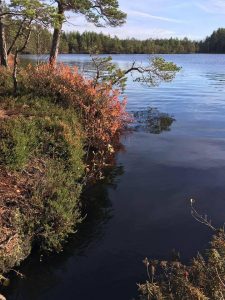

I am very pleased Leslie saved a spot for me in order to blog about my thoughts. I wrote last year as well. It has been a pleasure to read all your practices in GID, this has given me a lot of inspiration! Finland has just celebrated the 100th birthday and it is an appropriate time to take a look at what is going on in education, a short glance.
Let me start by presenting myself. I am a librarian gone researcher. I have a history in school libraries. There were issues, which pushed me into information science research. I have planned my blogging week to be divided into three blog posts: one to present the current situation in Finland in the field of education and reading. The second to be about my research I am finalising at the moment and the last post to be about where in all this can we see Guided Inquiry Design having a place.
Finland is in the middle of a curriculum change, as the primary school changed into the new core curriculum in 2016 and the seventh grade in 2017. The eight and ninth grades will follow in 2018 and 2019. Curriculum change takes place approximately every 10 years. Therefore we are just in the beginning of this period.
As changes always, this gave reason to a lot of questions and even problems. The biggest change affecting all the work is the change in evaluation and assessment. Less numbers are given and most of the assessment should be done along the course, as continuous evaluation. The evaluation will be given in written and the teacher should have an evaluation discussion with each student. The students are also required to set their own goals for learning.
Another change has come in the form of phenomenon based learning. Every student is entitled into at least one phenomenon project during the school year. This means, that a theme, a phenomenon, is studied in collaboration with several subjects as a theme day, theme week or a longer project worked on once every week. There are several ways to carry this out. However, the problem has been finding the planning time, to fit the projects in to the hourly planning of different subjects. This is much easier to carry out in the primary school (1-6 classes, but to take this to the secondary school context (7-9 classes) with tighter subject boundaries – it does require more coordinating and planning.
Then there is an issue of the digital leap. For several years there has been a target to get more educational technology into schools and into learning. The digital leap has been a very hot subject in Finland. It feels like there are two camps: the ones that feel that IT (information technology) is not the key to better learning results and the camp where people feel it is the requirement for good learning results.
The issue is more complex than this. A private consulting company had rearranged the latest PISA results. They point out that the digital technology devises, which the student are using on their own in class are even worsening the learning results. The teachers’ use of technology had a more positive effect and also with the IT technology the students are using during past time. These results just indicate that the mere use of technology does not count as pedagogical use of technology. Which already made sense before the study.

Kuhankuono National Park
But the feeling I have at the moment is that the changes have come too fast and the schools were partly left with too little support and further education in this situation. There is a lot of frustration, working over hours and even resistance.
Then the issue of reading surfaced this October. The further analysis of 2016 PISA results show, that 10% of students graduating from compulsory comprehensive school (classes 1-9) have such poor reading skills that they difficulty to function in the society and in their further studies. The majority of these 10% are boys. The difference in reading skills between boys and girls is one of the biggest in comparison between all PISA countries. The government took initiative and established the Literacy Forum. This forum (which has 30 members, only 2 from libraries) has a goal by the end of August 2018 to come up with a plan, which would engage the whole nation to a community effort in reading, a reading bee.
In my doctoral research I have analysed the Finnish core curriculum looking for issues relating to information literacy skills. I have structured a model of these issues and will present it in my thesis. However, I have lately started to think that how is it that there are a lot of issues in library and information science, which would be of significant help in education, but these models just are not known in schools? Is it that the researchers cannot communicate to the field or in this case, is it about the difficulties to communicate from a field to another?
We take for example GID. We who know about the method have to be vigilant and energetic in pursuing contact with teachers and librarians. We should work with shareholders to see the benefits of library and information science resources to education. For some 20 years have teachers presented similar difficulties in students information behaviour. Still we are facing the same difficulties. Communication and collaboration is the key!
With best regards, Anu Ojaranta
(M.Ph., PhD student, qualified teacher)
Information Studies
Åbo Akademi University, Turku, Finland